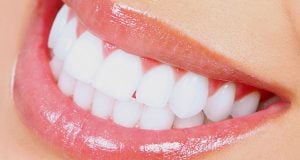Having yellow or stained teeth, a noticeable gap, or missing teeth can diminish a person’s smile and confidence. Some individuals turn to porcelain veneers to remedy their dental issues and achieve a more natural and attractive look. However, veneers can be expensive, and they require permanent alteration of the teeth.
Instead, snap on veneers provide a more affordable, non-permanent solution. Patients should consider the benefits and drawbacks of this option. Also, they should consult their dental provider to discuss the differences between snap on veneers vs. porcelain veneers, to determine which are right for them.
Table of Contents
What Are Snap on Veneers?
Snap on veneers differ from their traditional counterparts. The more conventional surfaces typically consist of a thin, customized layer of porcelain that covers the front teeth. Traditional veneers can last up to 20 years, and they tend to have a natural look.
For porcelain veneers, the dentist may remove some enamel from the original teeth to allow for the placement of the porcelain shell. They then make a cast mold of the teeth getting the covering. In a dental lab, a technician uses the mold to make the veneers. The nature of the veneer placement process is usually permanent because of the enamel removal – some no-prep veneers are a reversible process.

Patients wanting a non-permanent alternative might consider snap on veneers, which act like a mouthguard. These veneers solve most dental problems like missing teeth, yellowing, staining, and some gaps. Once they are created and fitted, the patient can snap on these veneers over their teeth and remove them at their convenience.
The placement of snap on veneers is relatively painless and more straightforward than the porcelain kind. Because snap ons are removable, the procedure does not require injections, bonding, or enamel reduction. Like the traditional veneers, the snap ons come from a lab where a technician produces them from a mold of the patient’s original teeth. The shell usually consists of resin, and they make a snapping sound when correctly fitting over the natural teeth.
Maintenance of snap on veneers is simple. The user can clean them by rinsing them under running water and brushing the inside to remove food and other particles. Because people can wear these veneers while eating and drinking, regular cleaning is essential. Also, users should remember to remove their shells before going to bed.
Advantages of Snap On Veneers
In general, snap on veneers are safe. With proper care and cleaning, they will not cause tooth decay. Most wearers find them convenient since they can eat, drink, talk, and do virtually everything else without others noticing.
Many prospective patients might ask, “How much do snap on veneers cost?” Whereas porcelain veneers typically have a price tag of over $1,500 per tooth, snap ons total about $600-$2,000, depending on the brand. Even for patients who want permanent veneers but do not have the budget, the snap on option can be a reasonable first step toward a more natural-looking porcelain shell.
The process for placing snap on veneers is also less painful and complex. Veneers that snap on and off do not require enamel removal, anesthetizing injections, or other more involved dental procedures.
Disadvantages of Snap On Veneers
Snap on veneers are not a good fit for everyone, including breastfeeding individuals or people worried about getting a more natural look. Also, patients with loose-fitting crowns, deep cracks, cavities, gum disease, and broken teeth are not good candidates. Snap on veneers cannot solve crooked teeth because the placement process does not involve altering the original structure of teeth.
Despite how safe they are, snap on veneers can cause serious dental problems if they do not get a regular cleaning. Food particles that remain inside these shells can cause cavities and other forms of decay. Also, bacteria might get trapped between the veneers and the natural teeth, causing additional issues.
The quality of snap on veneers might present another disadvantage. To many patients, they might not look as natural as porcelain veneers. The snap on type also wears down more quickly and incurs more chips and stains, diminishing their look over time. While porcelain veneers can last up to 20 years with adequate oral hygiene, snap ons need replacement about every 12 months or less.
Snap on veneers can seem somewhat inconvenient given that users need to remove them at night, and snapping them off might become difficult at times. Also, while most can stay in during eating or drinking, they can soften when the wearer drinks hot liquids. Finally, some patients might develop an allergic reaction to the veneer material, although this tends to be rare.
Snap on veneers can be an affordable, non-permanent alternative to more traditional veneers. While snap ons involve simpler placement and provide many benefits, patients might consider porcelain veneers for more serious dental concerns. Regardless of which type of veneer patients consider, they should always consult with their dental provider to determine which ones best meet their cosmetic and dental health needs.
- Dental Implant Pros and Cons - August 26, 2023
- Receding Gums Stages - August 12, 2023
- When Is It Too Late for Gum Grafting? - July 8, 2023


